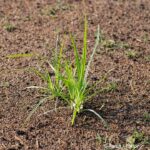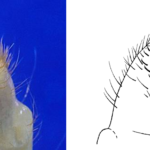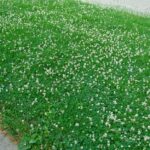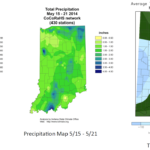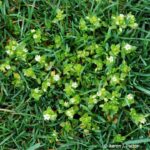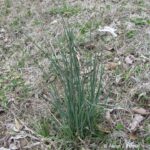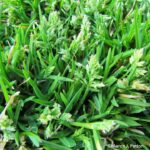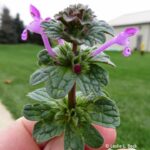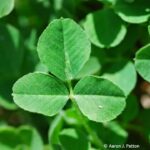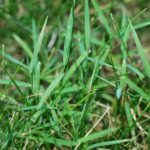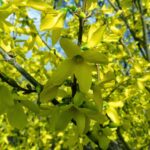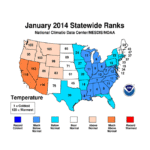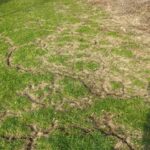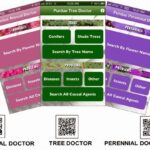Turf Tips Archives
Purdue Turf and Landscape Field Day, July 15, 2014
On Tuesday, July 15, 2014 the Purdue Turf Program and the Midwest Regional Turf Foundation will host the Turf and Landscape Field Day. The Turf and Landscape Field Day is Indiana’s largest green industry field day. This will be the second year with landscape research tours added. Specialists from four different departments in the College […]
Yellow Nutsedge
Yellow Nutsedge Biology: Yellow nutsedge (Cyperus esculentus), also known as chufa (chufa is a non-weedy variety that is used for wildlife food plots and is not a cold hardy weed like yellow nutsedge), nutgrass, or watergrass, is a troublesome, difficult-to-control perennial weed found throughout the United States. It is important to understand […]
Japanese Beetles are Upon Us
The first Japanese beetles of the year were captured June 8 in West Lafayette. Emergence is now in full swing. This imported pest is common east of the Mississippi river and in the Mississippi river valley. Adults feed on more than 400 plant species including many common ornamental plants. The soil-dwelling larvae (grubs) feed on […]
Ground Ivy
Ground Ivy Biology: Ground ivy (Glechoma hederacea), also known as creeping Charlie, is a very difficult to control perennial broadleaf weed. It can often be seen growing in the shade and invading turfgrass and other mowed areas throughout the United States. Ground ivy thrives in moist, rich soils located in shaded areas, but […]
European Chafer is at the Root of Spring Grub Damage in Northern Indiana
Reports of spring white grub damage are relatively uncommon in most of the Midwest. However, the European chafer is a slightly different beast and seems to be more cold-hardy than other annual white grubs. This characteristic allows it to feed later into the fall and start feeding earlier in the spring compared to Japanese beetle […]
Weed Management is a Prerequisite for Using Neonicotinoid Insecticides
Honey bees and other pollinators forage for nectar and pollen on a wide range of flowering plants, including some of our most common turfgrass weeds such as dandelion, white clover, ground ivy, speedwell, chickweed and a host of others. If any of these flowering weeds are present at noticeable levels, it may be wise to […]
Early Season Caterpillar Update
Most of Indiana experienced cooler than normal temperatures over the last week, with good amounts of precipitation providing very good growing conditions for cool-‐season turf. However, green-‐up of warm-‐season grasses has been slow, so we have a relatively mixed bag for insect development and damage. The cooler temperatures and ample rainfall should help mask insect […]
Mouse-ear Chickweed
Mouse-ear Chickweed Biology: Mouse-ear chickweed (Cerastium vulgatum) is a broadleaf weed that normally acts as a perennial; however, it has the ability to act as a winter annual depending climate conditions. Mouse-ear chickweed germinates by seed from late summer to fall or early spring. As long as cool climate conditions and moist soil […]
Common Chickweed
Common Chickweed Biology: Common chickweed (Stellaria media) is a winter annual broadleaf weed. It forms dense, prostrate patches in turfgrass throughout North America, though it can grow much taller when it’s not mowed. Common chickweed germinates from seed in late summer or early fall. However, germination timings can vary throughout the year if […]
Wild Garlic
Wild Garlic Biology: Wild Garlic (Allium vineale) is a monocotyledonous cool-season perennial that can be found throughout most of the eastern and southern United States. Despite having linear leaves and parallel veins, wild garlic is neither a grass nor a sedge; it is a member of the lily family. Wild garlic is more […]
Annual Bluegrass
Annual Bluegrass Biology: Annual bluegrass, commonly referred to by its scientific name Poa annua (sometimes pronounced Po anna on TV), is a winter annual grass that is a difficult-to-control weed in turf. Seeds germinate in late summer, early autumn, and spring. Annual bluegrass is found throughout the United States, particularly in highly compacted, excessively […]
Henbit
Henbit Biology: Henbit (Lamium amplexicaule) is a common winter annual broadleaf weed found throughout the United States. It can often be mistaken for another closely related winter annual broadleaf, purple deadnettle. Both can be observed by their showy pink to purple flowers which are primarily produced in April, but can appear from March […]
Black Medic
Black Medic Biology: Black Medic (Medicago lupulina) is a summer annual (or less commonly a winter annual) broadleaf weed that can be found throughout the United States. Seeds germinate in the spring and are capable of establishing in drought-prone or disturbed soils. Black medic is a legume, meaning that it has the capabilities […]
White Clover
White Clover Biology: White clover (Trifolium repens) is a perennial broadleaf weed that can be found throughout the United States. Seeds can germinate in moist-cool conditions in spring, early summer, or early fall. Because it tolerates close mowing, can grow in multiple soil types, and has the ability to fix its own […]
Nimblewill
Nimblewill Biology: Nimblewill (Muhlenbergia schreberi) is a warm-season perennial grass found throughout the northeast, southeast, and Midwestern United States. It can often be mistaken for other mat-forming grasses with blue-green foliage such as bermudagrass or creeping bentgrass. It grows well in moist, shady areas but it is also found in […]
How Big is Your Lawn?
A key step in most lawn maintenance practices such as seeding and fertilizing as well as with double-checking your calibration and application accuracy is to determine the size of the turf area. Determining your lawn area will help you calculate how much seed you need, how much sod to order, how much fertilizer to apply, […]
Crabgrass Germination Coming Soon!
This time of year many have questions about crabgrass control. Below are several previous Purdue turf tips that answer the most commonly asked questions about crabgrass control. When will crabgrass germinate? When should I apply my preemergence herbicide (crabgrass preventer)? Which preemergence herbicide should I use? How do I control crabgrass in spring seeded turf? […]
Cool-Season Turf Winterkill: Potential Losses and a Pathway to Recovery
This winter has been cold and long. From December 2013 through February 2014, Indiana had it’s 9th coldest winter on record and its coldest since 1979, 1978 was coldest on record (Fig. 1). With such cold temperatures, many are worried about winterkill. Fig. 1. In the past 120 years, this was the 9th coldest […]
Melting Snow Reveals Tiny Trails
With the winter snows finally melting away many are often surprised to find a series of tiny trails on the surface of their lawns and turfgrass fields. These are vole highways. Voles are often called meadow or field mice. While they are similar to a house mouse in general size and shape, they […]
Use Purdue Plant Doctor Apps for Android and iPhones to Fix Plant Problems
Correct diagnosis is the most important step you can take toward fixing plant problems. We took the best photos we had in our libraries and put them in our apps to help you become better plant managers. The Purdue Plant Doctor suite of smart phone apps will help you diagnose and find recommendations to manage […]
